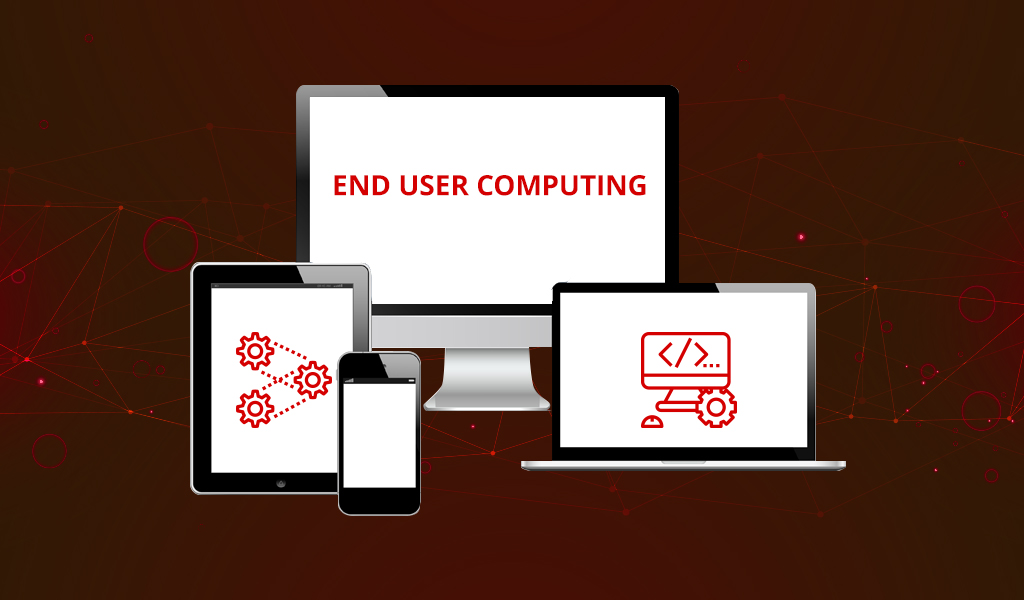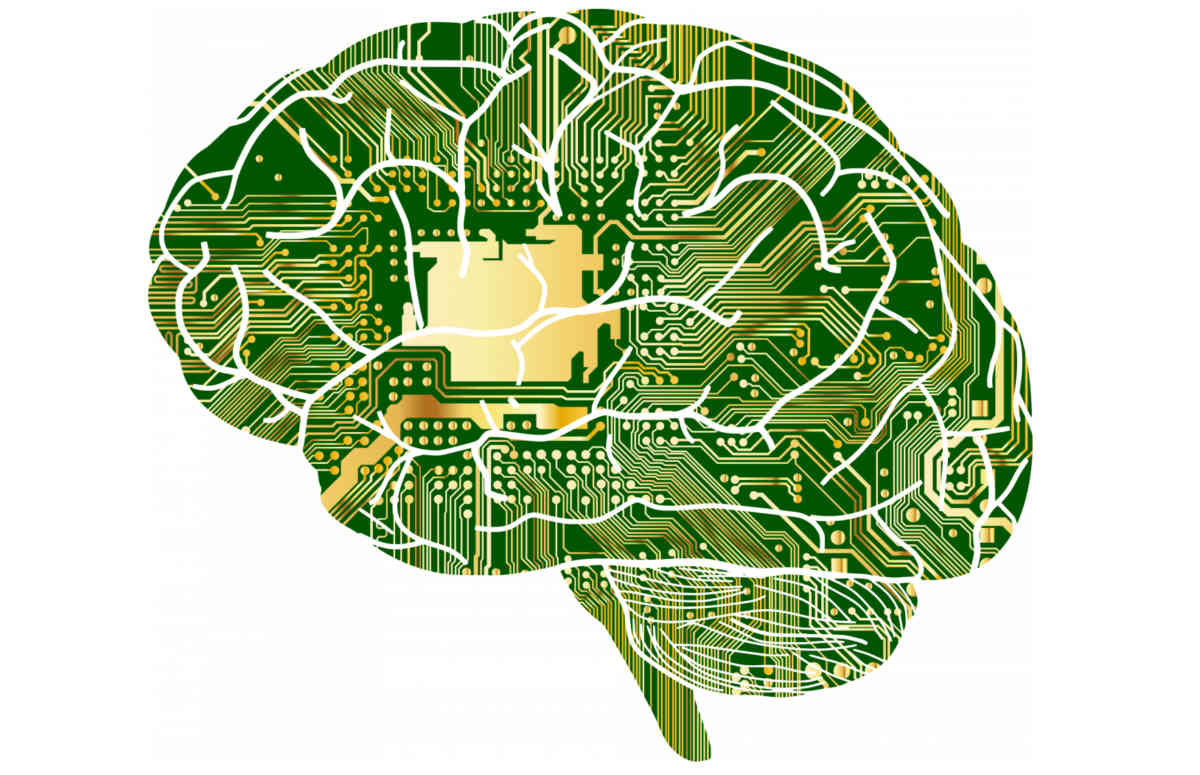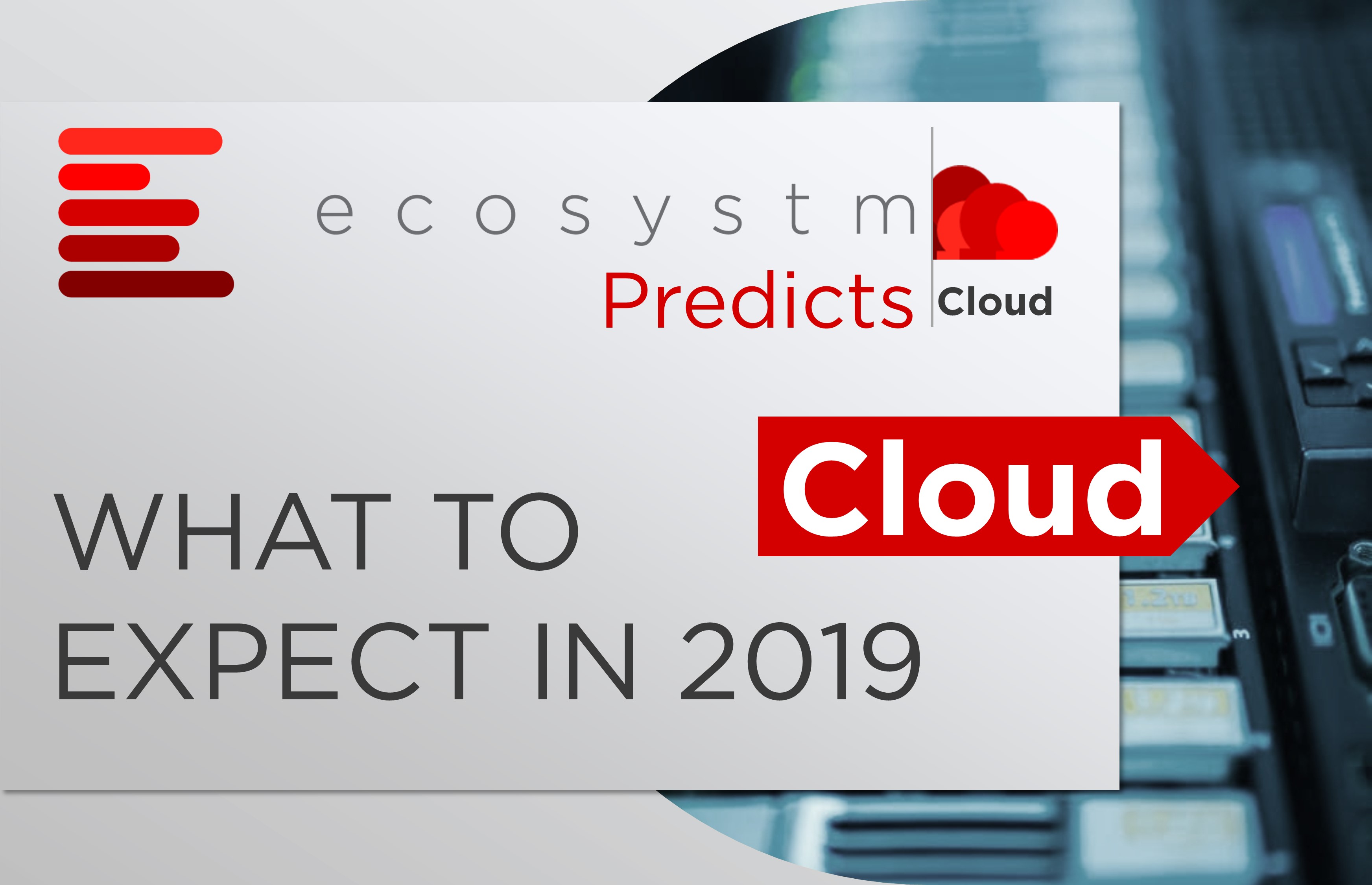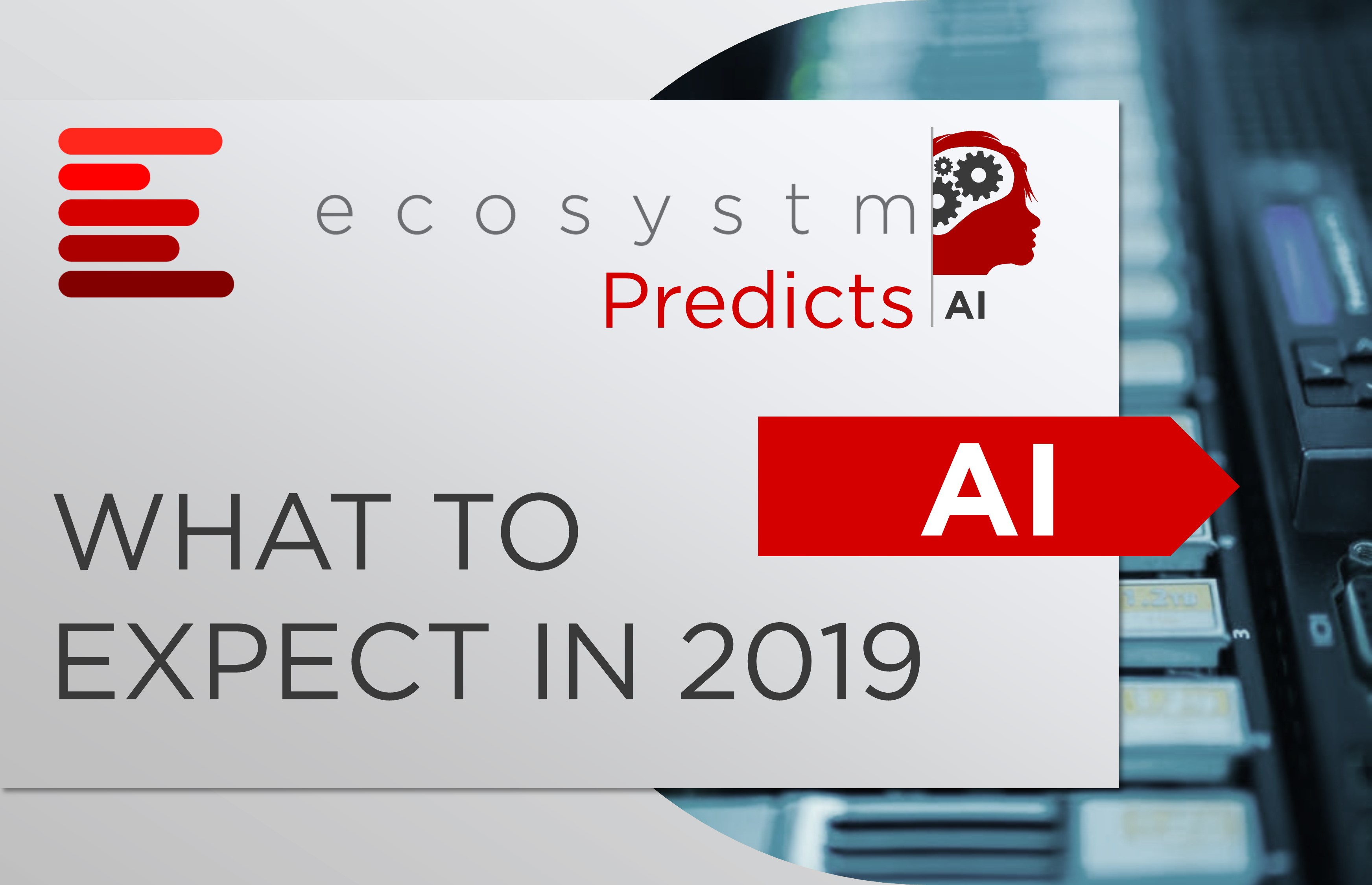I ran several roundtables over the past few weeks speaking to business and technology leaders about their AI investments – and one factor came up many times – that it is hard to build a business case for AI because 70% accuracy was not good enough…
What this means is that companies have thousands of things to automate. Most of those automations in the short-medium term will deliver 100% accuracy using RPA and other simple automation tools. Every time you run that process you know the outcome.
Along Comes AI and Machine Learning
These dumb processes can now learn – they can be smart. But originally they won’t deliver 100% accuracy. They might only deliver 60-70% to start with – climbing perhaps to 90%. The benefits of these smart, learning processes can amaze – costs can fall, processes can improve, outcomes can accelerate. But traditionally we have built technology business cases delivering 100% accuracy and outcomes.
So we need a new way to think about AI and a different language to use about the way it works. The people who sign off on the business cases might not understand AI – they will come to the business case with the same lens they use for all technology investments (and evidently – all business investments). We also need to be better at selling the benefits to our leaders. CEOs and Managing Directors in the roundtables are surprised to hear that AI won’t deliver 100% accuracy – they said unless they know more about the capability, savings and outcomes that the solution might drive, they are unlikely to fund it.
Make Your Dumb Processes Smart
I take this as good news. It means we have moved beyond the hype of AI – the need to “do AI in our business” that drove many of the poorer chatbots and machine learning projects. It means that businesses review AI investments in the same way as any business investment. But it also means we can’t over-promise or under-deliver on AI. Woodside did this with their initial foray into AI, and they are still playing catch up today.
While there are many opportunities to use “dumb automation” and save money, reduce or redeploy headcount – or have employees focus on higher value activities or make real differences to customer experiences – there are as many opportunities to make dumb processes smart. Being able to automatically read PDF or paper-based invoices – processes usually done by humans – could be a huge saving for your business. OK – maybe you can’t redeploy 100% of the staff, but 70% is still a big saving. Being able to take human error out of processes will often help to save money at two steps on the process – automating the human input function up front and also getting rid of the need to fix the mistake.
Start Your AI Journey With The Low Hanging Fruit
Ecosystm’s Global Ongoing AI study has shown that most businesses are focusing their AI investments on internal initiatives – on reducing process time, cost savings and driving productivity – which makes the most sense today. They are the easier business cases to build and the easiest benefits to explain.
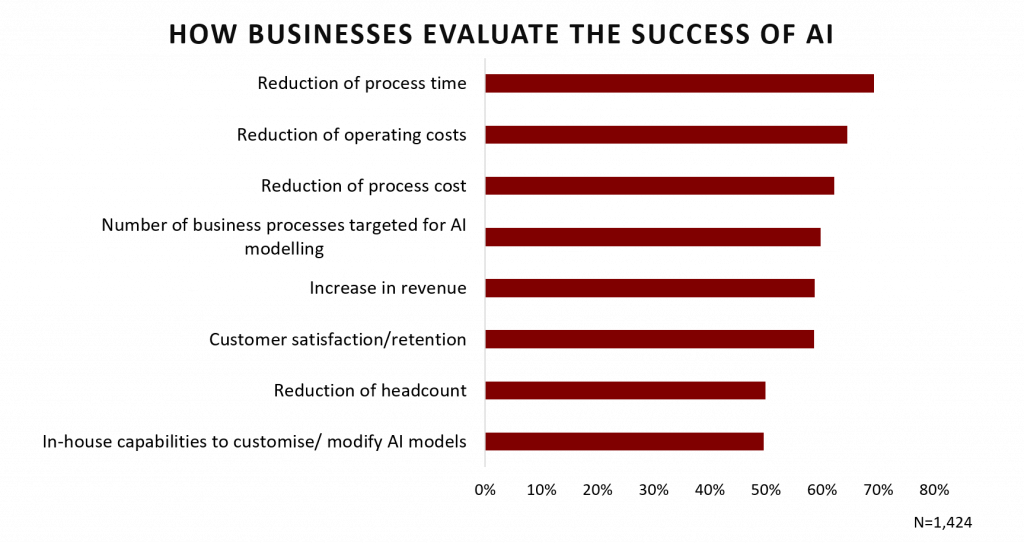
Perhaps AI is also a chance for businesses to acknowledge that “efficient” does not always mean “good”. Many of the processes we automated or coded to ensure 100% compliance don’t give customers or employees what they are looking for. And maybe making the customer happy 70% of the time is better than not making them happy at all…
If you’d like to dig deeper into Ecosystm’s reports exploring the data from our ongoing AI study – check them out here (you’ll need to register if you have not already – it is free to register, but some content is premium):
4 Vendors Emerge as Leaders: Understanding the AI Vendor landscape
Use Cases Drive AI Software Adoption: Understanding The Industry Landscape
Today Samsung announced their new “Samsung Galaxy Fold” device – and while it won’t be available until at least April 26. This foldable hybrid phone/tablet device is not the first foldable phone – but it will likely be the first one to have mass market availability and will be the first that businesses consider deploying.
But what is the business opportunity for the Samsung Galaxy Fold? It is not a slim, sexy phone, and it is not a large screen tablet like an iPad or Galaxy Tab S4 (although the screen is actually bigger than the smaller screen Tab A 7” tablet). It will be an expensive device (US$1,980) – but depending on the configuration will likely be cheaper than a high-end phone plus a high-end tablet. It doesn’t come with a stylus, but has the ability to help users multi-task (supporting up to three apps at the same time) and also supports DeX – Samsung’s under-rated ability to turn the phone into a PC-like experience. It also supports Samsung Knox, so the security capabilities that Samsung is becoming well known for will be supported by the Galaxy Fold.

Initially, it looks like a device that could replace the “phone and tablet” combination, but the reality is that many of the types of role that have both devices (engineers, repair people etc) typically require ruggedized devices – even a white goods repair person is working in wet and dirty environments and would at least have some type of case on their device. The unique nature of the Galaxy Fold likely prohibits a ruggedized case – and possibly any case at all (as the fingerprint sensor is on the side of the device).
A “Shareable” Device
One factor that strikes me about the Fold is the fact that large screens not only make content easier to consume – but also easier to share. Travelling salespeople – who typically do meetings in cafes or offsite meeting rooms often pull out their tablet or laptop to demonstrate a product or show a presentation or video. Laptops are not great for this – as the interface is designed for one user – not multiple, and many don’t have 4G connections.
You often see software salespeople pull out their tablet to demonstrate their SaaS platform – so this is one of the use cases for the Galaxy Fold – it is a pocketable tablet that has 4G (or 5G) connectivity. Any situation where a white collar executive is sharing information is a potential opportunity for the Galaxy Fold. Only time will tell whether such executives are willing to accept the compromises (thicker device, smaller front screen).
The Ultra-Portable Laptop
The Fold could be the device that shows the real benefit of Samsung DeX – the extra memory and processing power might convince some businesses or end-user computing teams to dump the laptop for some of their employees – and give them a device that can be a phone, tablet and PC. Carrying your laptop between work and home in your pocket might be an attractive option for some users.
An Executive Status Symbol
The Fold will make its way into the senior management ranks too. The device will draw attention and interest – so those who seek such attention will be drawn to it. But if you look around the senior executive community you see those who don’t mind having a larger device in their pocket normally do so because they have covered the phone in a massive “Otter Box” case – they are looking to protect their asset – again the lack of protection may be an inhibitor for this buyer. And the other execs who like a slim, sexy device may be put off by the size. It is hard to know exactly where the Galaxy Fold will land.
Whatever happens, it is great to see the rate of innovation in the smartphone market start to accelerate again after 3-4 years of stagnation. From an engineering and design perspective, the Fold looks incredible. What role it takes in the end-user computing strategy of businesses across the globe isn’t yet clear – but the idea of a device that helps your business users better share content could certainly be an opportunity.
If you’d like to discuss your End User Computing strategy feel free to reach out to me at: tim.sheedy@ecosystm360.com – or if you have any thoughts of other use cases for the Samsung Galaxy Fold please post them in the comments below – let’s keep the conversation going!
For most companies, End-User Computing (EUC) is considered an expense to the business. EUC strategies are typically exercises in cutting costs – with often not much more than lip service given to the needs of employees (or employee personas). I know – I help companies write these strategies, and the costing component is always the piece that gets the strategy over the line.
But the winds are changing. Employee Experience (EX) is taking off as a serious business initiative. For example:
- Edmunds.com wrapped the traditional Facilities and Human Resources functions into a combined WEE Team which represents Workplace and Employment Experience. They engaged in a campaign to rid the company of the term “Human Resources”
- Airbnb has a dedicated team to “drive the company’s health and happiness”
- Nitro has “turned old-school HR on its head and instead created Employee Experience (EX)
In our upcoming CX research, the early data is showing that EX is the number two initiative for businesses across the globe in 2019. And for information workers, the technology that sits in front of them is a HUGE component of their experience – and their ability to get and stay productive.
Productivity Should Be The Focus Of Our EUC Strategies
Smart businesses understand that. They allow employees to choose (or bring) the devices that they need to remain productive. While desktop PCs might not be making a comeback, they are increasingly being adopted as an alternative to the “laptop as one device” strategy that many businesses embrace. Sometimes a powerful computer with a big screen (or multiple screens) is what people need to get the job done. Other times a small form factor desktop is perfect. Employees may need tablets or smartphones. And other times they need regular laptops, convertibles, or 4G connected laptops. Smart businesses also focus on seamless security – knowing that security is a key enabler of productivity. We are seeing that “The best, most secure device for the job” is taking off as a EUC hardware strategy in businesses that are striving to build a productive and enjoyable employee experience. This helps them to keep employees productive and will help them attract and retain the best talent.

And EUC goes beyond the device to the entire user experience
Collaboration initiatives often disappoint. Limited adoption, and limited interoperability between applications limits effectiveness. There is often a disconnection between the collaboration system and how it helps employees hit their goals. Microsoft is currently rebooting its collaboration strategy – and has created a more modern system that more closely mimics the processes of a typical information worker (Teams). Slack is also taking the world by storm – as it is a collaboration tool that helps people the way they work today – it doesn’t require any training.

IT Operations professionals need to take a fresh look at EUC – but this time within the context of the other initiatives in your business. Do you already have a team focusing on EX? Are there initiatives you can help with – or piggyback on? There is real academic research proving the link between happiness and productivity – or the “state of flow”. IT holds the key to productivity – and therefore happiness – for information workers in particular – it’s time to step up and put employee experience and productivity – not costs – at the centre of our IT end-user computing strategies.
I recently published my predictions on AI (see blog here and download or view the more comprehensive report here). The prediction that got the most feedback and discussion concerns the likelihood of a large acquisition or merger based on AI assets. With AWS, Microsoft, Google and IBM dominating Ecosystm’s list of current and future preferred AI suppliers in our AI study, other companies (such as SAP, Oracle, SAS and Salesforce) want to be the choice for AI platform. As we published our AI predictions, this one was already coming true (to an extent anyway!) with SAP’s acquisition of Qualtrics.
But the question has been asked “why is AI so important”. And my answer to that question is “because, for software companies, AI is the end game…”
What do I mean by that? Well we are not too far away from a day where traditional enterprise applications are no longer relevant. ERP, CRM, HRM, SCM etc will all disappear and be replaced by an AI engine. The purpose of those traditional systems was to simplify, codify, and automate business and customer processes. ERP, CRM, and the rest are already starting to use algorithms to drive semi-custom (typically pre-coded) business processes. But in the mid-term future, we will have a time where the entire process is intelligent – where the system/application creates the best business process for the customer on the fly. I’ll take you through an example:
A customer comes to your website – the site will look at the information it has on the customer (either as a registered customer or a non-registered one, where it will scour cookies, IP addresses, location, social information – Facebook, Pinterest, Google etc) and then will create an experience designed for that customer – e.g. it might know the customer is based in New York City, is a Mets and Rangers fan, viewed posts on Facebook about global warming, is female, 42 years old, has kids etc. It uses the language of the customer, words that they would relate to, and the level of detail they would expect. It puts the products or services forward that best match that customer’s potential needs.
The customer orders 10 identical products as gifts for friends for Christmas – but the provider does not have a location with any more than 4 of those products – so the intelligent system sources the 10 from different locations and organises multiple shipments. One of the locations can’t ship until after xmas – but the intelligent system decides that the customer is important so puts in a request for Uber to pick up from that location and do the delivery. However, there is no automatic integration with Uber – so the intelligent system creates a real time custom integration with Uber.
The customer also asks the question if they can pay with AliPay – which the supplier does not accept as standard – however again the intelligent system creates a real time integration with AliPay in order to complete the transaction. The customer gets the goods they want – quickly – and gets to pay in the way they want. The system accounts for the revenue and moves it to the right bank accounts, co-ordinates follow-up orders with suppliers, and adds the sales information to the real-time sales analytics. It also crafts a unique email welcoming the customer and adds them to the customer database.
The intelligent system created a unique process in real-time as it interacted with the customer using text, images, video and voice. The system understands what your business is trying to achieve and what the rules are.
Such a capability is not that far away – and it makes existing enterprise applications and integration platforms redundant. THIS is why AI is the end game – if you aren’t the chosen AI platform in your customers, you might not be in your customers plans for much longer.
In most organisations that transition will be slow – applications will get smarter, and will move from standardised processes to unique processes slowly. These organisations will start from their application investments and work outwards from there. But other companies will start from their cloud-based AI platforms and partners – and reinvent their businesses in the cloud on these platforms. Others will do both – and at some stage in the future need to decide on which AI platform they standardise on…
Therefore mergers and acquisitions in the AI market are inevitable. Applications, cloud and analytics providers will build and buy capabilities, customers and market share in order to position themselves as the key AI platform in their clients. For many technology vendors, the next few years will be integral to their long term success. AI will change the technology provider landscape as we know it today – get strapped in for a fun ride!

The growth in public cloud platforms and applications is just starting to hit its strides. In 2019, more companies will spend more money moving more of their applications and processes across to the public cloud. Many cloud markets will move into hypergrowth. Cloud computing adoption is moving beyond the fast adopters to the mass market – so dynamics are changing. Our top five predictions for 2019 are:
Many SaaS Applications Will Move into Hypergrowth
If you think that the software-as-a-service (SaaS) market is a mature one, think again. Yes, cloud-based solution providers such as Salesforce have a lot of customers for their CRM and Marketing platforms, as do vendors such as Microsoft and Google for their collaboration suites – but even the cloud-based CRM market is set to explode in 2019 as the number of companies looking to deploy SaaS-based applications nearly doubles. Most companies across the globe still have most of their applications hosted in their own or partner data centres. The opportunity in the SaaS market is still huge – and will be that way for years to come. SaaS-based BI & Analytics will move from 10% of companies using it today to 21% in 2019, marketing applications from 10% to 24% and UC&C from 11% to 21%.
Security Will Return to Being the Number One Barrier to Public Cloud Adoption
As the cloud providers start to penetrate the “mass market” – involving companies that are not fast adopters and do not push the envelope and procrastinate over big technology or business decisions – expect the question of security to come up again. And again. And again… When public cloud first entered the business consciousness 10-12 years ago, security was the number one reason why companies did not embrace it. It slipped down the list over the past few years as more leading, fast moving businesses overcame this objection – but with more companies looking to implement public cloud services, more of the objectors are coming back out of the woodwork to make security a number one blocker again.
Partners Will Come Back into Fashion for Cloud Deployments
The very first companies to move to public cloud platforms or software typically used a partner – they were going where few had been before, and they relied on the expertise of external providers to help them make the move. But the past five or so years have seen many businesses eschew partners in the move to the public cloud – as they looked to learn the skills that they require both to make the transition and for the ongoing management and automation of the cloud environment, themselves. But as the market for public cloud software and platforms moves into hypergrowth, more companies will look to partners to help them with the transition to cloud – and more importantly – the ongoing management of their cloud environments.
Cloud Ecosystems Will Accelerate the Adoption of Artificial Intelligence Solutions
Today nearly every software provider is looking at the opportunity to make their software smart – to have the software learn, predict, personalise, see, sense or converse. Some have started by building their own AI tools – but these companies are learning that these tools are more lines of code that need to be maintained, secured, evolved and improved. Smart ISVs are building their AI capabilities using the tools that already exist on the public cloud platforms. In fact, this move is seeing more ISVs move away from hosting the cloud version of their software from their own cloud platform to one of the big five or six public cloud platforms. As more ISVs make their software intelligent, more customers will be able to adopt AI solutions that are embedded in their existing software tools and platforms.
Companies Move to the Cloud for the Features and Functions, but Will Stay for the User Experience
While companies might move to the public cloud because of the features, functions, technical capabilities or in-country data centres, what keeps customers on cloud platforms is the user experience. Some of the global public cloud platforms and software providers have not created the best user experience – yes, the technologists and developers might love them, but cloud usage is quickly moving beyond the technology team. AI tools need to be used by data scientists and product managers, while automation tools will be used by Customer Experience professionals. Business analysts want to be able to create or vary processes without the intervention of the IT team or cloud management partner. User experience will be key to increasing cloud usage within existing customers.
For access to the full report, please follow this link.
Artificial Intelligence (AI) will change the way businesses operate, and the way customers interact with your company or brands. It will also create new markets and eradicate existing ones. 2019 will be the year that some AI technologies approach mass-market adoption. It will also be the year that businesses start to sort out their data requirements for AI, amid a complex data privacy regulatory environment. But most of all, 2019 will be the year that AI starts to impact employee and customer experiences – from the board room to the living room. Our top five predictions for 2019 are:
Machine Learning and IoT Sensor Analytics Will Drive AI Growth In 2019
The Global Ecosystm AI Study shows that the growth in AI over the next 12 months will come from Machine Learning (ML), as this capability is applied to a plethora of problems and challenges across the business. IoT Sensor Analytics will also see strong growth – due to the growth in IoT implementations and subsequent exponential growth of the data coming off these sensors and the desire to do something intelligent/different with this data.
The Growth in IoT Will Fuel the Growth in AI
Today, many organisations are deploying IoT solutions. These sensors are already creating – and will continue to create large amounts of data. While these sensors today are, for the most part, one-way (i.e. collect and analyse data), we are getting closer to the point where many of these sensors will be bi-directional (i.e. sense and respond). Businesses will look to AI tools – particularly IoT Sensor Analytics and ML – to help them learn from that data and respond accordingly. In many ways the future success of IoT and AI are interdependent.
In the Short Term, AI Will Create More Jobs than it Removes
Much of the media focus on AI has been around the jobs that will disappear in economies driven by AI and the automation that it will enable. But in 2019 (and over the next few years), AI will create more jobs than it removes. How is this? Firstly, we are seeing AI do a lot of jobs that are not even done today – analysing images for trends that humans did not see, looking for correlations in data sets that we did not know existed. Secondly, even where automation and AI are driving productivity, the vast majority of organisations are taking the opportunity to reskill those people. AI-driven profit will be ploughed back into businesses and create more employment opportunities – some of which we can imagine today and some we cannot. Thirdly, there is the vast hiring that organisations have started to undertake to bring on board the skills they will need to make their business smarter with AI. Many of these jobs today are in addition to, not replacing existing resources.
Bimodal IT Departments Will Slow Down AI Implementations
Many of the digital capabilities that businesses have been building over the past five or so years have not required active participation by the IT team. What started as “shadow IT” initiatives became the standard way to deliver customer and business value as smart organisations pushed their technology resources into the product and customer teams, so they could drive innovation at pace. But AI initiatives involve training algorithms with data – the more data the better the algorithms. Business leaders will need to work with IT to get access to this data – that typically resides in “back-end” systems – to train their models. At this step, many bimodal IT departments will kick the project into slow mode, because the data sits in “slow mode” back-end systems. The project will be managed with “slow mode” processes, using heavy-handed governance and processes to turn what could have been a six-week project into a six month one.
A Merger of Massive Scale Will be Driven by AI Assets
According to the Global Ecosystm AI Study, Microsoft, IBM, AWS and Google account for 62% of current and planned AI implementations – and that dominance is set to continue for the foreseeable future. This means a lot of other big companies miss out. SAP, Oracle and Salesforce are hoping that AI will help them get deeper within their existing customers and also expand beyond their current client base. Therefore, we expect a massive merger (in USD billions) driven by the AI customers and assets of the technology vendor. Technology companies that are used to dominating their industries – Cisco, HPE, Dell EMC, SAS and others could be left behind if they do not get scale quickly in the AI space – so a major merger is on the cards.
For access to the full report, please follow this link.
I regularly hear CIOs and other tech leaders complain of the IT skills crisis – that it is hard to recruit new people, they are too expensive, and that they are hard to retain. But at the same time, Australia Bureau of Statistics data points to the fact that, while the number of people studying IT-related courses is dropping, graduates are finding it hard to get a job – and for every job advertised in IT there are 29 candidates per open role. Despite all of this, I would argue that we don’t have an IT skills crisis – we have a training gap. A big one.
Just in the Sydney market I was recently told by various industry leaders that over the next few years there will be a shortage of AWS skills in the market – by up to 2,000 people. The same can probably said for Azure skills, security, DevOps, data scientists, and Google Cloud Platform. However, assuming 30 in a training group, and a week-long course, the AWS gap could be closed in 15 months by a single training provider – in less time with it spread out across many providers. Yes – some might need more training (weeks or months), but others could need less.
In the battle to keep up with market demands, I regularly see CIOs, Applications, and Infrastructure leaders bring in expensive contractors and consultants to make up for their skills gap. You KNOW what skills you will need. You WILL have some of your applications and infrastructure in the public cloud. You WILL need AI expertise. You WILL need more security professionals. You also know what skills will disappear or have less demand – and if you don’t, get on a call or catch up with a peer in the industry who has made the move to a modern, cloud-based development environment.
The costs of training should be in your budgets today. You should be having conversations with your infrastructure professionals about what skills they will need in the public cloud world – some might make the leap to DevOps pros, others Automation Engineers. You should be upskilling your developers to become BizDevOps pros. Put them through Design Thinking and Customer Journey Mapping training. Have them spend more time with the product, service, or CX leads. Retrain some of your QA professionals to become quality AND monitoring professionals – get them involved in live systems, as it will enhance their testing skills. Work with your DBAs to understand the skills they will need to transition to, and manage public cloud databases.
Most of the people you need already work for you – they just need the skills that will take them and your business forward.
Have you noticed how IT shops are changing? ANZ Bank, BankWest, William Hill, REA, Sportsbet and many other organisations are restructuring their technology function – moving many of the functions that impact the product or customer experiences into the teams that are responsible for that product or the customer experience. These business restructures often go well beyond an IT change – it is usually about putting all of the resources that can impact the customer outcome into the same team in order to be able to drive change at pace. Some take it even beyond the customer and product teams, and move HRM to the Employee Experience team, ERP to the Finance team, CRM to the sales/marketing team/s etc.
So the question needs to be asked – if most of your IT team has been moved to the business teams, what is the role of the CIO? And the answer to that question, most of the time is “there is no role for a CIO”… In fact, many businesses that have made this move no longer have a CIO. When REA made the change, their CIO became the Chief Inventor; when William Hill combined IT and Product, the CIO effectively became the head of products.
But this doesn’t mean there is no role for the CIO – some will see the opportunity to embrace their technical side and become a “Chief Engineer” – as many businesses will maintain some technical capability in house. Some will become the head of Employee Technologies – your information and other workers will still need end-user computing devices, tech support etc. A potential pit stop role will be head of Digital as some companies are giving the responsibility to drive digital transformation to a senior executive (but as mentioned this role is just a pit stop as being digital quickly becomes everyone’s responsibility – not just that of a senior executive!). Some will embrace their passion for innovation and lead the big changes that the business will need to face, and others will step up to a senior management role within the business – possibly managing change, implementing automation, or another new competency required of the business.
So as a CIO you need to start mapping your future journey – when will your company or department embrace the “fast & innovative” approach to business and restructure around products or the customer (some call it the “Spotify model”, others the “software model” – but either way it is about being able to deliver customer value at pace)? What will your role be in the transition? And what will your job look like after the change? I recommend you drive this change and become a master of your own destiny – I know some who CIOs who had this change forced upon them, and it did not end well for them.
I have helped CIOs and their teams with this transition so please reach out if you are interested in having Ecosystm help your business become fast and innovative in order to drive better customer outcomes, and help your CIO and IT team to create a new digital-ready future.
Speed and innovation are at the core of any successful business today – with power placed increasingly in the hands of digitally-savvy and fickle customers, the pressure to continuously improve products and services has never been greater. If they’re not delighted by each and every interaction with a brand, today’s customer simply moves on at the click of a button or swipe of a screen.
For digitally-native businesses – for example, Spotify or AWS – this competitive, customer-focused spirit is in their blood. But otherwise, most traditional businesses today are not set up to deliver a great customer experience. Bogged down by traditional organisational models, they are instead structured more around cost efficiencies than innovation.
Think, for example, of a typical IT team – generally, all tech staff will sit in their own division, removed from the rest of the business because it’s easier to track, manage and budget their work. What happens, then, if the Head of Customer Experience has a request? It’s unlikely they’ll have much interaction with the team, and probable that they’ll be answerable to different KPIs than IT. The result is often two frustrated parties lacking a common language and unable to deliver innovation at the pace required by customers and the wider business.
The challenge is to reorganise team structures in a way that allows for innovation to flourish. In the era of Digital Transformation 1.0, that meant a bolt-on or ‘bi-modal’ approach to digital, essentially giving a dedicated team the resources and license to operate at pace, while the rest of the business continued plodding along in a traditional environment. It’s not a bad place to start to get digital initiatives prioritised, but the reality is that ‘digital’ now impacts every transaction and every touchpoint.
For example, even if customers go into a bricks-and-mortar store, it’s likely they’ll have first researched products and compared prices beforehand. Meanwhile, on the business side, sales & marketing teams are now using aggregated data insights to inform their campaigns in the hope of shortening sales cycles. Or how about airline passengers – how many people do you think would go into a travel agency? Now, we can book our flight, seat, meals and luggage online, as well as check-in before we even get to the airport.
This means that a one-dimensional team isn’t enough to change or impact customer experiences. Instead, businesses need to be gathering people from across their organisation – whether that’s Product, CX, Distribution and of course IT – who today have different metrics, budgets, priorities and timelines, and give them the mandate to work together towards one united goal.
In an airline, that might mean moving from a structure where they have logistics, ticketing, loyalty, IT, project management, customer lounges, check-in, and baggage all into a single team called “pre-flight experience”. Every time a change needs to be made to the customer experience before the flight, all the roles that can impact that change can come together easily, knowing that they share the same goals and are driving towards the same outcome.
It’s a divide and conquer approach – instead of putting all the IT eggs in one basket, you send them into the product and experience teams to develop and improve digital services on the ground. The new structure of IT teams (Figure 1) would have:
- Product and project managers working side-by-side, complementing each other’s skill sets while overseeing the process of developing and improving products, services and experiences
- Developers embedded in the teams, sitting alongside Quality Assurance to ensure the development of digital services is not unnecessarily slowed down
- DevOps providing the cloud infrastructure and platform services as required
- Customer / User Experience teams, working closely with tech to ensure final products and services are easy and intuitive to use, and delight the customer
- Data Management shared across teams to ensure insights are not siloed, but rather treated as a product and integrated throughout a business
- Architecture as a guiding function, constantly evolving and improving capability that makes the business better, more efficient and faster
Security, often shared across teams, and given the ultimate power to say ‘no’ if a product could compromise customers, employees or the business itself
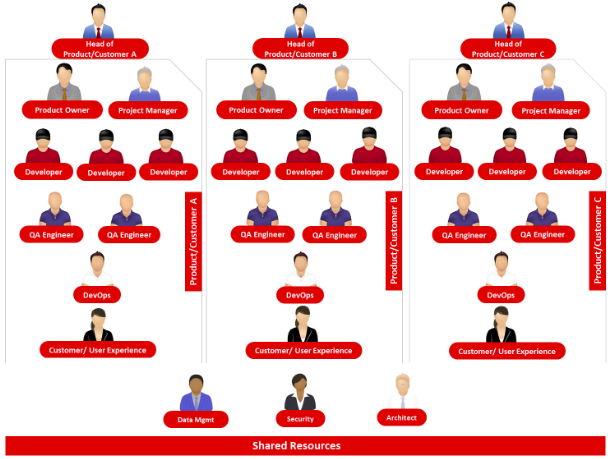
But, where to start? Ultimately, the power to drive changes lies in the hands of the CIO, but will require collaboration across the c-suite as business leaders adapt their relationship with IT and determine team KPIs. It’s also important to provide training to help employees prepare for the new structure.
Once in place, this model could well change the face of IT teams as we know them. For Technology Leaders, the role of the CIO will inevitably evolve – whether they become a technical leader, run innovation and invention functions, or take responsibility for delivering revenue and/or customer outcomes. CIOs who are ahead of this change will be able to shape their role going forward based on their profile – but it’s worth noting that those who have change forced upon them will rarely be in a position to be masters of their own destiny.
On the flip side, for Technology Vendors, this model is likely to bring challenges. By bringing business and tech buyers together into one team, we should see a shorter sales process – but it will also make it harder to find the right buyer in the first place. To further complicate matters, with a focus on delivering continuous customer value, buyers are likely to require specialised solutions tailored to their unique needs and goals. Vendors will therefore have their work cut out to better understand their customers and the outcomes they are trying to drive in order to make the sales process smoother.
This new model of delivering continuous customer value is not perfect – it has inefficiencies, and moves away from focusing on big-ticket inventions towards smaller, everyday innovations. However, it is only through making the transition to becoming a fast and evolving business that companies will maximise their IT and digital capacities.




